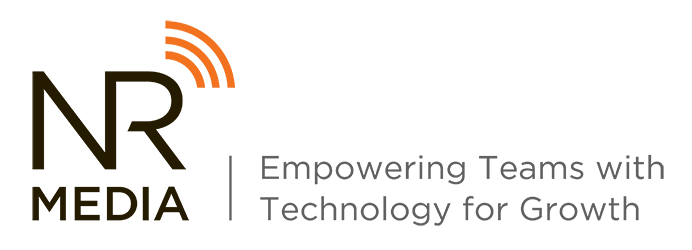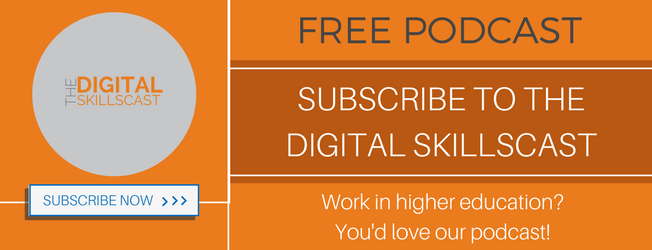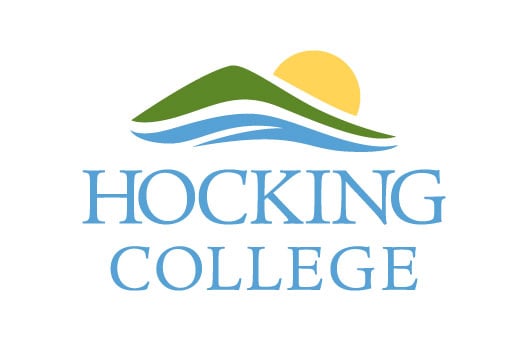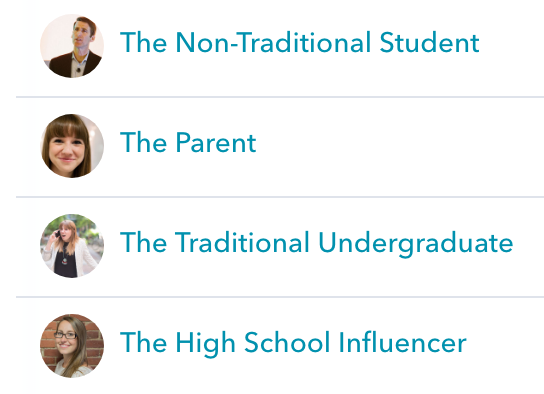
With more than 68 million Gen Z-ers entering college for the first time over the next 15 years, colleges and universities will be forced to adapt their traditional marketing practices to what works best for this internet-saavy generation.
So how do you improve student enrollment at the college and university level?
The answer is simple — Inbound Marketing.
What is Inbound Marketing?
The old way of marketing is to constantly push products down the throats of those who we want to sell to. This can be done in a variety of ways, ranging from:
- Print advertisement
- Television commercials
- Unpersonalized Email Blasts
- Radio advertisements
- Pop-up advertisements
- Online Video Advertisements
- Etc.
To curb this growing trend, in 2006 the philosophy of Inbound Marketing was created.
Inbound Marketing is the practice of creating great content that users can find based on their own searching of social media, search engines, and blogs.
The Buyer's Journey and How it Can Translate to Higher Education
The buyer's journey is defined as, "the process buyers go through to become aware of, evaluate, and purchase a new product or service".
This process has three key parts: Awareness, Consideration and Decision.
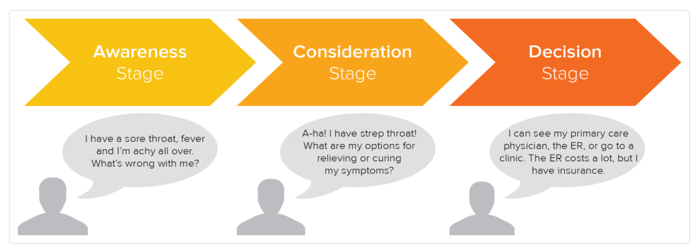
The Awareness stage is when the person realizes they have a problem. In terms of higher education, this would be when a high school student or adult in the workforce realizes that they can either work or advance their education.
For high school students, this will begin around sophomore or junior year. For adult learners, feelings of needing to go back to school typically occur when they see their peers receiving promotions in the workplace or when there is a job opening that requires additional educational experience.
The Consideration stage is when the person realizes they have a problem and they begin researching their decision. In terms of higher education, this stage typically lasts the longest, as students tend to compare things such as programs, costs, requirements, boarding, and more.
Because of the increase in third party sites that allow students to compare colleges and universities without going to their websites, colleges and universities will need to adapt to drive traffic to their website.
Take an example from Marcus Sheridan, owner of River Pools & Spas, and just answer the questions that your customers want answered—even going as far as comparing all of the college and universities in the surrounding area.
Don't think it will work? That's where you're wrong because at the end of the day those types of comparison articles drive customers to your website, leaving them to explore your content, creating hundreds and thousands of potential leads for you.
The Decision stage is when the person makes their decision. In terms of higher education, this would be when a potential student has decided they are planning to attend your college or university.
Keep in mind that when a person is at this stage, it is important that there is an easy path to complete what they need to do. Provide clear and actionable tips for the Admissions process to ensure that these students are able to convert on your website.
How to Improve Student Enrollment with Inbound Marketing
The best way to improve student enrollment with inbound marketing is to adapt to the changing environment. By realigning your marketing strategy with the your customers, you are more likely to not only reach them, but to get them to convert.
Under the inbound methodology, there are a few ways to do this.
Blogging
Inbound Marketing is all about creating great content. So what is great content, you ask?
Great content answers a question or solves a painpoint that a consumer might have. For example Gen Z is incredibly concerned with accruing college debt, so your college or university might write a blog that talks about the various ways students can get scholarships and loans at your instutition.
In order to get these students to convert, the blog should provide links that pull them deeper into your website. This could be through a call-to-action for a free budgeting download or something that might be equally relevant to the budget-concious Gen Zer.
Social Media
Social media is a great tool to amplify your inbound marketing messaging. Tools such as Facebook's Business Manager allows colleges and universities to run advertisements promoting content and videos around programming.
Audience segmentation allows users to run advertisements targetting other Colleges' Facebook pages, age and interest demographics, programs of interest, and more. The combinations are endless and allow for incredibly specific and effective marketing.
Search Engine Optimization
Search Engine Optimization, also known as SEO, is a college's best friend.
Developing an SEO strategy that caters to the specific terms that potential students search will allow colleges and unversities to cast a wider net when working to attract new students. Strategies will focusing on long-tailed keywords offer the best opporunity for conversions.
How HubSpot Can Help
HubSpot is an inbound marketing and sales software, with more than 15,000 companies in 90 different countries.
Using HubSpot, businesses, colleges, and universities are able to house their website, email marketing, CRM, and blog under one program that provides a seamless experience for users as they move through the buyer's journey.
HubSpot Education Partner Program
If HubSpot hasn't won you over for internal usage just yet, consider starting it in the classroom.
Over the years, HubSpot has been working to develop a program that allows Colleges and University's to teach their software in the class room, known as HubSpot's Education Partner Program.
The Education Partner Program provides college and university professors with everything they need to teach courses in marketing, sales, entrepreneurship, and communications through a variety of free HubSpot software, resources, and support.
Want to see the HubSpot Education Partner Program in Action?
Check out OhioMarketingStudents.com, an online learning lab for MKT students at Ohio University.
Want more information? Contact us today to sign up for the Inbound Readiness Workshop, a full-day intensive workshop to help your team understand Inbound Marketing, Sales and Growth Driven Design.
